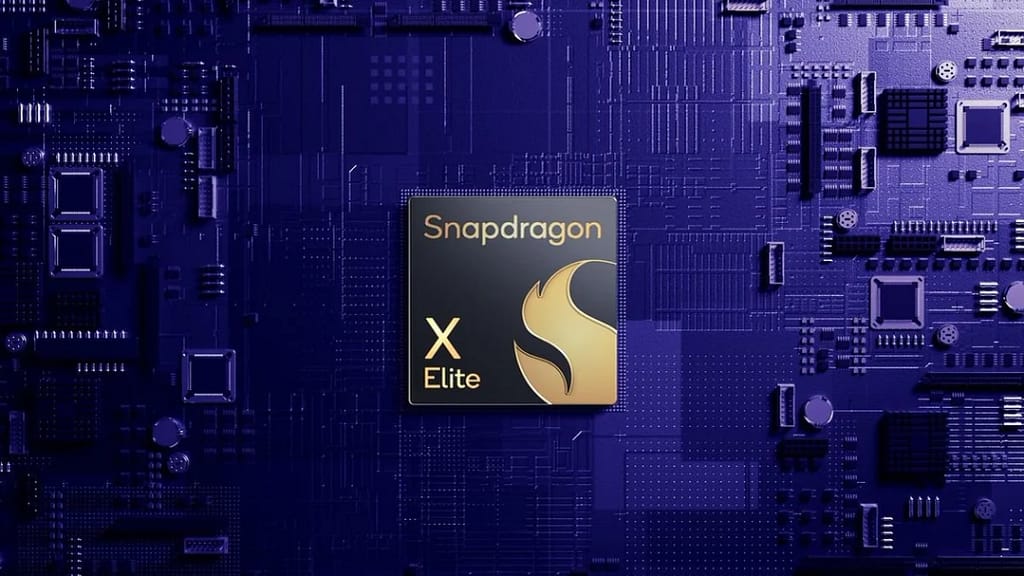The landscape of computer processing is shifting rapidly, and at the forefront of this transformation is the release of Qualcomm’s X-Elite SoC. The advent of this new System on a Chip (SoC) brings fresh perspective to the capabilities of Windows on ARM, potentially shifting the dynamics of power within the industry. Let’s delve into what makes the X-Elite a significant release and how it stacks up against the competition.

The Qualcomm X-Elite SoC Breakdown
The X-Elite is Qualcomm’s ambitious entry into the high-performance segment, offering a configuration that’s designed to handle intensive tasks and applications. With 12 high-performance Oryon cores, the X-Elite lacks traditional efficiency cores, diverging from the big.LITTLE architecture commonly seen in mobile processors. This is a strategic move aimed at maximizing performance.
Qualcomm’s latest SoC also includes a significant GPU upgrade, although specifics about the number of cores remain undisclosed. Despite this, it’s confirmed to be DirectX 12 Ultimate compatible, promising a level of graphical fidelity that’s in step with modern gaming and professional demands.
Performance Comparisons and Industry Implications
Initial benchmarks position the X-Elite SoC’s single-thread (ST) performance as highly competitive, rivaling even Apple’s M2 series chips. Multithread (MT) performance, as suggested by preliminary figures, seems to align closer to Apple’s higher-tier M2 Max, rather than the M2 Pro. This is particularly interesting given the significantly different approaches to core configurations between these two titans of industry.
However, the X-Elite SoC’s GPU, while solid, doesn’t appear to lead the pack. It has been compared favorably to the base model M2 and potentially the upcoming M3, indicating a strategic choice to balance multicore CPU performance with adequate, though not class-leading, GPU capabilities.
Power Consumption and TDP Considerations
One of the more controversial topics around the X-Elite SoC has been its power consumption. The disclosed 80W thermal design power (TDP) figure has raised eyebrows, especially when juxtaposed against Apple’s more conservative TDP numbers. It’s essential to note that this figure encompasses the whole device, including storage and display, not just the CPU. Still, the figure indicates a design that’s more power-hungry than some competitors, which could impact battery life and thermal management.
Market Implications and Future Outlook
The X-Elite is more than just a piece of hardware; it represents a shift in how Windows on ARM could be perceived in the future. There is a clear signal that Qualcomm is ready to challenge the dominance of traditional x86 architectures, especially in the mobile segment. With Microsoft’s support and a growing ecosystem of ARM-native applications, the X-Elite could be at the vanguard of a new era for Windows laptops and possibly desktops.
As with any new release, the true test will come with independent, detailed reviews that scrutinize the SoC in real-world scenarios, including emulation performance for legacy x86 applications. This is an area where Apple’s ARM-based chips have excelled, and Qualcomm will need to demonstrate comparable efficiency to gain a foothold.
Concluding Thoughts
Qualcomm’s X-Elite SoC presents an intriguing alternative to the status quo, promising high performance that could spur on further innovation in the ARM-based computing space. As it stands, the conversation around the X-Elite is filled with both anticipation and skepticism. Potential users are looking forward to the chip’s robust performance profile, while also weighing the implications of its power demands.
While Apple continues to refine its M-series chips, and as Intel and AMD evolve their offerings, the X-Elite positions Qualcomm as a contender not to be underestimated. The coming months will be crucial as the industry watches to see whether Qualcomm’s gamble pays off and how the ecosystem adapts to this new powerhouse. The X-Elite SoC could potentially be a turning point, marking the moment when ARM-based Windows machines step out of the shadow of their x86 counterparts and shine on their own merits.

